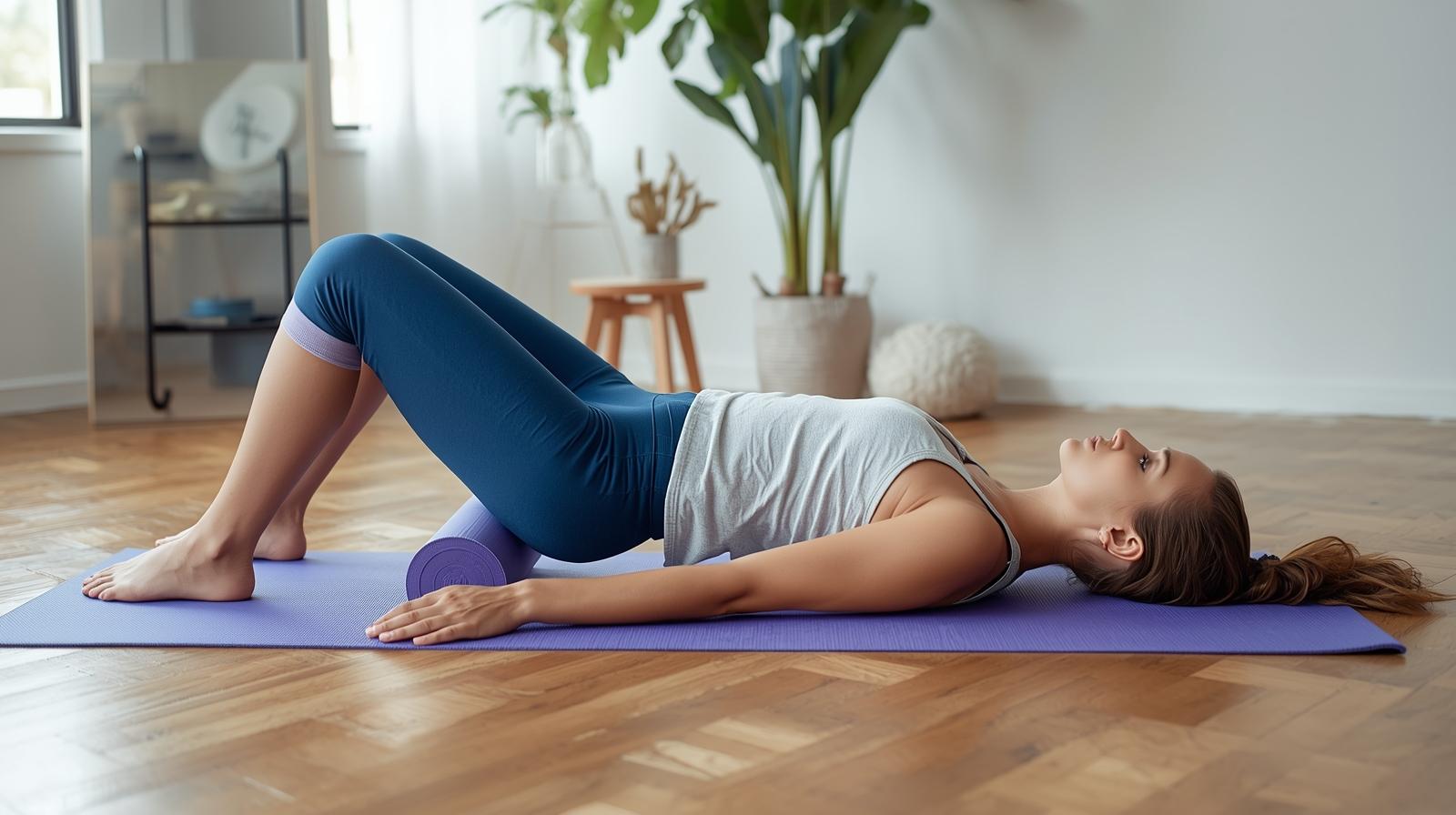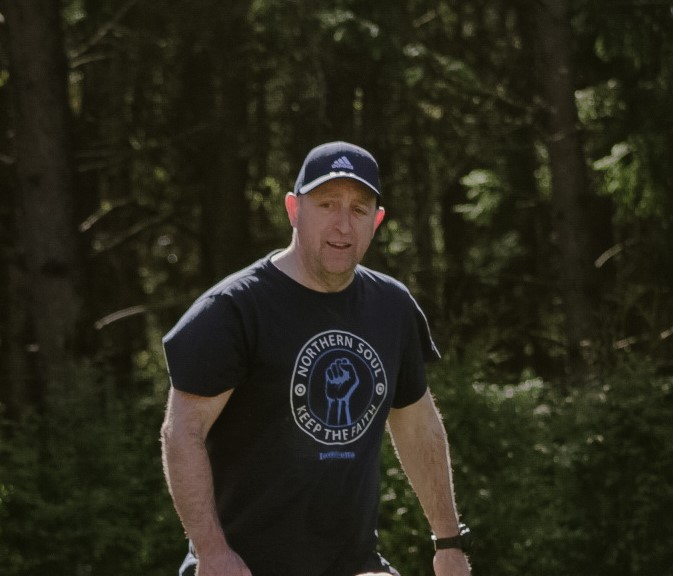Stretching & Flexibility Beyond 50
Introduction: Embracing Agility After 50
As we gracefully navigate the journey past 50, our bodies undergo natural changes. Joints can stiffen, muscles lose elasticity, and movements might not feel as fluid as they once did. But aging doesn't have to mean surrendering to rigidity. One of the most potent tools we have to combat these effects and reclaim our physical vitality is stretching.
This isn't just about touching your toes (though that's a great start!). Stretching, when practiced regularly and correctly, can be a game-changer for individuals over 50. It's about maintaining and improving flexibility, enhancing mobility, and fostering an overall sense of well-being. In this blog post, we'll delve into the profound benefits of stretching for those in their golden years, providing practical tips and guidance to help you build a safe and effective stretching routine.
Why Stretching Matters as We Age
The physiological changes that come with aging underscore the importance of incorporating stretching into our lives. Here's why it becomes increasingly crucial after 50:
- Reduced Collagen Production: Collagen, the protein that provides structure and elasticity to our tissues, naturally declines with age. This contributes to stiffness and reduced flexibility.
- Decreased Muscle Mass (Sarcopenia): As we age, we tend to lose muscle mass, which can impact strength and mobility. Stretching helps maintain muscle length and suppleness, counteracting the effects of sarcopenia.
- Joint Stiffness: The cartilage in our joints can thin and become less hydrated over time, leading to stiffness and discomfort. Stretching lubricates the joints and improves their range of motion.
- Sedentary Lifestyle: Many older adults become less active, which exacerbates the age-related decline in flexibility and mobility. Stretching is a low-impact way to combat the negative effects of inactivity.
- Postural Changes: Age-related changes can contribute to poor posture, leading to muscle imbalances and pain. Stretching can help correct these imbalances and improve alignment.

Key Benefits of Stretching for the Over 50s
The benefits of stretching extend far beyond simply improving flexibility. Here are some key advantages for those over 50:
- Improved Flexibility and Range of Motion: This is the most obvious benefit. Stretching increases the length of muscles and the range of motion in joints, making everyday activities easier and more comfortable.
- Reduced Pain and Stiffness: Stretching can alleviate muscle tension and joint stiffness, reducing pain associated with conditions like arthritis and back pain.
- Enhanced Circulation: Stretching increases blood flow to muscles and tissues, promoting healing and reducing inflammation.
- Improved Posture and Balance: By correcting muscle imbalances and improving body awareness, stretching can enhance posture and balance, reducing the risk of falls.
- Stress Relief: Stretching promotes relaxation and reduces stress by releasing tension in muscles and stimulating the parasympathetic nervous system.
- Increased Energy Levels: By improving circulation and reducing muscle tension, stretching can boost energy levels and combat fatigue.
- Better Sleep: Regular stretching, especially before bed, can promote relaxation and improve sleep quality.
- Injury Prevention: Flexible muscles are less prone to injury. Stretching can help prevent muscle strains, sprains, and other common injuries.
- Improved Athletic Performance: For those who enjoy sports or other physical activities, stretching can enhance performance by increasing power, agility, and endurance.
- Enhanced Mental Well-being: The mind-body connection is powerful. Stretching can improve mood, reduce anxiety, and promote a sense of overall well-being.
Types of Stretches to Incorporate
There are several types of stretches, each with its own benefits. Here are some that are particularly beneficial for older adults:
- Static Stretching: Holding a stretch in a stationary position for a period of time (usually 15-30 seconds). This is a safe and effective way to improve flexibility. Example: Holding a hamstring stretch by reaching for your toes (modifying as needed).
- Dynamic Stretching: Moving through a range of motion with controlled movements. This type of stretching is great for warming up muscles before exercise. Example: Arm circles, leg swings, torso twists.
- Proprioceptive Neuromuscular Facilitation (PNF) Stretching: This technique involves contracting and relaxing muscles to increase range of motion. It's often done with a partner or resistance band. It is recommended to learn this under supervision. Example: Contract-relax hamstring stretch.
- Yoga and Pilates: These practices incorporate a variety of stretches and movements that improve flexibility, strength, and balance. They are excellent options for older adults.
- Foam Rolling (Self-Myofascial Release): Using a foam roller to massage muscles and release tension. This can improve flexibility and reduce pain. Example: Rolling the calves, hamstrings, or back.
Essential Safety Tips for Stretching After 50
Safety is paramount when starting or maintaining a stretching routine, especially for older adults. Here are some crucial tips:
- Consult Your Doctor: Before starting any new exercise program, including stretching, consult your doctor, especially if you have any underlying health conditions.
- Warm-Up First: Always warm up your muscles before stretching. This can be done with light cardio, such as walking or marching in place, for 5-10 minutes.
- Stretch Gently: Avoid bouncing or forcing a stretch. Move slowly and deliberately into the stretch, and stop if you feel any sharp pain.
- Breathe Deeply: Focus on your breath while stretching. Deep, slow breaths will help you relax and improve the effectiveness of the stretch.
- Hold Stretches Long Enough: Hold static stretches for 15-30 seconds to allow the muscles to lengthen.
- Listen to Your Body: Pay attention to your body's signals. If a stretch feels painful, stop immediately. It's okay to modify stretches to make them more comfortable.
- Maintain Proper Posture: Focus on maintaining good posture while stretching to avoid injury.
- Stay Hydrated: Drink plenty of water before, during, and after stretching to keep your muscles hydrated and flexible.
- Avoid Overstretching: It's better to stretch regularly and gently than to overstretch occasionally.
- Cool Down: After stretching, take a few minutes to cool down with gentle movements or relaxation techniques.
Building Your Personalized Stretching Routine
Creating a stretching routine that fits your needs and preferences is key to long-term success. Here's a step-by-step guide:
- Assess Your Current Flexibility: Before you start, take some time to assess your current flexibility. Try touching your toes, reaching behind your back, and performing other basic movements. Note any areas of stiffness or discomfort.
- Set Realistic Goals: Don't try to do too much too soon. Start with a few simple stretches and gradually increase the intensity and duration as you become more flexible.
- Choose Stretches That Target Major Muscle Groups: Focus on stretching the muscles in your legs, back, chest, shoulders, and neck. These are the areas that tend to become stiff with age.
- Incorporate a Variety of Stretches: Include both static and dynamic stretches in your routine to improve flexibility and warm up your muscles.
- Schedule Regular Stretching Sessions: Aim to stretch at least 2-3 times per week, or even daily if possible. Consistency is key to seeing results.
- Find a Time and Place That Works for You: Choose a time of day when you're most relaxed and a place where you feel comfortable and undisturbed.
- Listen to Your Body and Modify Stretches as Needed: Don't be afraid to modify stretches to make them more comfortable or to avoid aggravating any injuries. Use props like towels or chairs to support your body if needed.
- Make it Enjoyable: Stretching shouldn't feel like a chore. Put on some relaxing music, practice in a beautiful setting, or stretch with a friend to make it more enjoyable.
- Track Your Progress: Keep track of your progress by noting how you feel after each stretching session and by periodically reassessing your flexibility. This will help you stay motivated and see how far you've come.
- Consider Professional Guidance: If you're unsure where to start or if you have any underlying health conditions, consider working with a physical therapist, certified personal trainer, or yoga instructor who can help you design a safe and effective stretching program.
Here's a sample stretching routine that you can adapt to your own needs and preferences. Remember to consult with your doctor before starting any new exercise program.
Warm-up (5 minutes):
- Light cardio, such as walking in place or arm circles
Stretches (15-20 minutes):
- Neck stretches: Gently tilt your head from side to side and forward and back (30 seconds each).
- Shoulder stretches: Reach one arm across your body and gently pull it towards you with your other arm (30 seconds each side).
- Chest stretch: Clasp your hands behind your back and gently lift your arms (30 seconds).
- Back stretch: Gently twist your torso from side to side (30 seconds each side).
- Hamstring stretch: Sit on the floor with your legs extended and reach towards your toes (modify as needed) (30 seconds).
- Quadriceps stretch: Stand and gently pull one heel towards your buttocks (30 seconds each side).
- Calf stretch: Lean against a wall with one leg extended behind you and gently press your heel towards the floor (30 seconds each side).
- Hip flexor stretch: Kneel on one knee with the other foot forward and gently push your hips forward (30 seconds each side).
Cool-down (5 minutes):
- Gentle walking or deep breathing exercises

Conclusion: Embrace the Power of Stretching
Stretching is an indispensable tool for maintaining and improving physical and mental well-being after 50. By incorporating regular stretching into your routine, you can unlock a world of benefits, from increased flexibility and reduced pain to improved posture and enhanced energy levels. Remember to listen to your body, stretch safely, and make it enjoyable. Embrace the power of stretching and embark on a journey towards a more agile, vibrant, and fulfilling life in your golden years. Your body will thank you for it!
Disclaimer: This blog post is intended for informational purposes only and does not constitute medical advice. Please consult with your doctor before starting any new exercise program.

